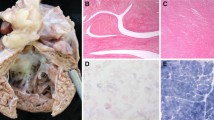Abstract
This review presents our current knowledge on the genetic and phenotypic aspects of mitochondrial complex II gene defects. The mutations of the complex II subunits cause two strikingly different group of disorders, revealing a phenotypic dichotomy. Genetic disorders of the mitochondrial respiratory chain are often characterized by hypotonia, growth retardation, cardiomyopathy, myopathy, neuropathy, organ failure, and metabolic derangement. These disorders are transmitted through maternal lineage if the defective gene is located in the mitochondrial genome or may follow a Mendelian pattern if it is in the nucleus. Mitochondrial complex II (succinate:ubiquinone oxidoreductase) is the smallest complex in the respiratory chain and is composed of four subunits encoded by nuclear genes SDHA, SDHB, SDHC, and SDHD. Complex II oxidizes succinate to fumarate in the Krebs cycle and is involved in the mitochondrial electron transport chain. SDHA and SDHB encode the flavoprotein and iron-sulfur proteins, respectively, and SDHC and SDHD encode the two hydrophobic membrane-spanning subunits. While mutations in SDHA display a phenotype resembling other mitochondrial and Krebs cycle gene defects, those in SDHB, SDHC and SDHD cause hereditary paraganglioma. Paraganglioma is characterized by slow-growing vascular tumors of the paraganglionic tissue (i.e., adrenal and extra-adrenal paragangliomas, including those in the head and neck, mediastinum, abdomen, and pheochromocytomas). Paraganglioma caused by SDHD mutations occurs exclusively after paternal transmission, suggesting that genomic imprinting influences gene expression. Association of a mitochondrial gene defect with tumorigenesis expands the phenotypic spectrum of mitochondrial diseases and adds genomic imprinting as a new transmission mode in mitochondrial genetics. The phenotypic features of complex II gene mutations suggest that whereas the catalytic subunit SDHA mutations may compromise the Krebs cycle, those in other structural subunits may affect oxygen sensing and signaling.
Similar content being viewed by others
Author information
Authors and Affiliations
Additional information
Electronic Publication
Rights and permissions
About this article
Cite this article
Baysal, B.E., Rubinstein, W.S. & Taschner, P.E. Phenotypic dichotomy in mitochondrial complex II genetic disorders. J Mol Med 79, 495–503 (2001). https://doi.org/10.1007/s001090100267
Received:
Accepted:
Published:
Issue Date:
DOI: https://doi.org/10.1007/s001090100267




